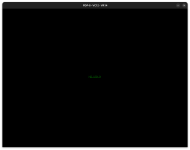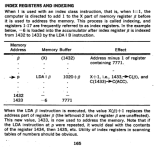gwiley
Experienced Member
Maybe you can scavenge the spring from a modern fuse cap so your fuse cap can look authentic/vintage
Certainly I will find some solution that will look authentic.Maybe you can scavenge the spring from a modern fuse cap so your fuse cap can look authentic/vintage
The decset8000 was acting weird again and again it turned out to be the fuse holder. Specifically it looks like the cap for the 5V 25 amp fuse is the issue. At VCFMW I thought it was just a corrosion issue but after closer inspection with magnifying gear it looks like the issue is the spring is no longer very springy. There is a spring in the fuse holder cap that pushes the fuse against the bottom of the fuse holder when the cap is bayoneted into place. I have the machine working now but I fully expect this to go out again. Maybe time to go hunting for a new fuse holder cap. It looks like it is original but the 5V one is grey instead of the black of all the others and it does look a little more heavy duty than the others.

Yes and no. The rear one might have been added later as it had the wrong connector on the power cable and someone broke off the retaining clip so it could be plugged in. I have been using it with just the front backplane because of this.Does this 8/E have two Omnibuses?
16k with 2 sets of 8k core. Plenty of slots free for the time being.with core memory?
No signs of heating or high resistance in the contacts. I measured the voltage drop from supply cap to bus pin when I first brought it up and it was not excessive.Are the MATE'N-LOK connectors showing any signs of discoloration on the +5V wires? Reworking with gold-plated pins and sockets to reduce the resistance or applying DeOxit D5 to those contacts can help.
I see what you mean. $22 before adding in the shipping costs.Not cheap though. Might be easier to look for an appropriate spring.

It was my first time diving over into the LINC side of the 12, and I was somewhat surprised to see that the DSC instruction I used pre-incremented the "register" I had pointed it to for indirect loading of the pixel-pattern words.
Exciting! It took some time to get the LINC addressing modes figured out, and half-word indexing is a thing to behold.Not physical hardware yet, but I did get Usagi Electric's "HELLORLD!" meme running under Vince's branch of SIMH for the PDP-12.
Here's my code, along with a Makefile that will check out vrs42's tools and run them.
It was my first time diving over into the LINC side of the 12, and I was somewhat surprised to see that the DSC instruction I used pre-incremented the "register" I had pointed it to for indirect loading of the pixel-pattern words. I'm still reading the PDP-12 handbook and trying to work out where that's explained, as the section on the scope instructions assumes a bit more LINC experience by the time you get there.
I'm hoping to see this running on the UMD 12 some time this week, via video!
View attachment 1267001
So far the only bug I ran into is that the build system doesn't know to pull in the SDL library paths properly if you just make pdp12 by itself: I have to make pdp1 first so it sets up the build environment for the 1's scope, and then the 12 builds fine! Not something you hit if you just build all of simh at a go, but I didn't want to wait for VAXen or CDC machines to finish just to print a silly message...Even more so as, while it did pass the CPU diagnostics at one point, the code isn't quite what I would call ready for prime time.
Thanks for trying it! Let me know if(when) you find bugs.
A quick note -- I checked out your code, and did 'make' then 'make test'. The make test hung in the PDP-12 build. I believe the pdp12.ini is keeping the SIMH register test from completing correctly.
I renamed pdp12.ini, finished the 'make test', then quit out of SIMH, renamed pdp12.ini back, and now 'make test' skips the SIMH build (as it is complete), and displays the "HELLORLD" text.
Core memory is destructive read. The bits get cleared in the case of DEC's implementation. Core memory operations are always read/possible modify/write. Writes need the clear bits part of the read because it isn't so much a write as an IOR with the existing contents. If you want to use a memory location as an auto incrementing index into memory without a holding register then you are going to get a pre-increment.

I confess to not having heard of this "cookbook". So I looked for it, or at least one, online. For future reference, I found this:Anyway, I'm going to have to read a lot more about LINC assembler, as I haven't found a good body of code to study like the Cookbook for the 8.
I confess to not having heard of this "cookbook". So I looked for it, or at least one, online. For future reference, I found this:
Very cool!I also have this document, where I spent a while writing up a sort of hasty exegesis for the thing: https://zork.net/pdp8-cookbook/cookbook.html
Bonus: if you have your OS/browser set to "light mode" it's in PDP-8 livery, and if you have "dark mode" it's PDP-12 colours!
Which section is this, and which instructions? I mentioned in the PDP-8 Instructions section that the text was from the PDP-12 documentation. I'm happy to add some sidebar notes with a warning about particular entries, and pointing readers to an overview of the differences if you have such a page available.1) The segment where instructions are presented to load values includes several model-specific instructions/values. These should perhaps be discouraged, or at least not included here.
Oh, another good catch! I'll update that shortly.2) Right after you mention 8tools in the sidebar (Thanks! The 8tools cross-assembler can also assemble PDP-12 LINC instructions.), you have a pointer to simh/simh. Should that be updated to point to open-simh/simh?
"Quick Constant Instructions" includes some examples with IAC combined with RAL/RTL/RTR. Those will work with most models and the PDP-12, but not on the LINC-8 or the straight-8.Which section is this, and which instructions?
WE do the same thing for the output buffer, but since we recently did a DCA we know
we don’t need to CLL: the LINK is already 0.WE do the same thing for the output buffer, but since we recently did a DCA we know
we don’t need to CLA: the AC is already 0.